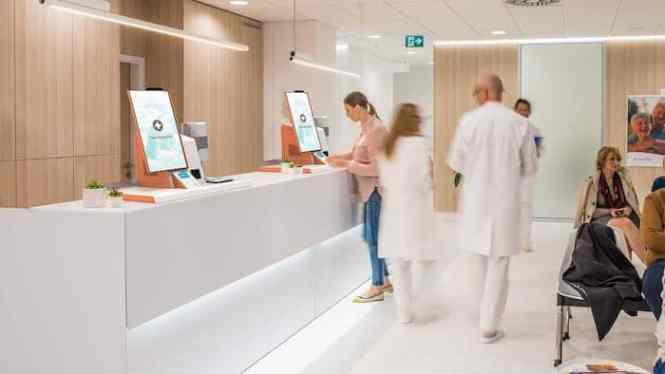
Healthcare Kiosks
Very nice blog by TPGi and their blog – Sept 2023
Healthcare kiosks are a valuable tool for providing a great patient care experience. The advantages for using kiosks in healthcare are numerous, like shorter wait times, streamlined check-in processes, streamlined patient education, and more. Kiosks can also save time and resources, allowing healthcare providers to obtain more information from patients while requiring fewer human resources.
Ensuring usability and accessibility for healthcare self-service devices improves patient care, and it also helps avoid litigation and costly settlements. The Americans with Disabilities Act (ADA) prohibits discrimination against individuals with disabilities regarding public accommodations, and the court has defined public accommodations to include service establishments, including healthcare facilities.
Learn more about creating accessible and usable kiosks for the healthcare industry.
Follow these four rules to make sure self-service devices are usable and accessible for patients with disabilities in any healthcare setting:
1. First, make sure your kiosk is physically accessible.
Healthcare kiosks must be physically accessible to comply with the ADA and ensure usability. For example, wheelchair users need to be able to access the kiosk. The ADA outlines specific compliance guidelines for the height of operable parts, the viewing angle, and the approach area for accessing the kiosk. The approach area requires a clear path without stairs, uneven flooring, or objects to obstruct access.
2. Ensure your kiosk application can be used by patients who are blind or with low vision.
Healthcare kiosks need a screen reader, such as JAWS® for Kiosk, to turn text into speech. To ensure a seamless experience for all patients, kiosks need an input device with an audio jack. Even more, the audio jack needs to automatically activate when headphones are inserted. Using an input device that includes an audio jack will allow a screen reader like JAWS to turn off and on based on the presence of headphones.
3. Allow users to engage with your kiosk without using a touchscreen.
Touchscreens may be difficult for people with disabilities, so an external input/navigation device is also useful to allow users to engage with a kiosk without using a touchscreen. The kiosk application must be developed to ensure it can be easily navigated and understood when read through a screen reader. WCAG 2.1 AA standards and website guidelines for accessibility must also be incorporated.
4. Protect patient privacy at every turn.
In any healthcare setting, kiosks must provide an accessible and private user experience for all patients. In order to protect patient privacy, all patients with disabilities should be able to use kiosks without the need for third-party assistance. You can further protect patient privacy by providing a privacy screen that shields others from viewing the screen, implementing proximity switches that reset the kiosk when a user is finished, and clearing user data between each session.
More Posts
- ADA Kiosk – High Level Overview of Rule Making U.S. Access Board(Opens in a new browser tab)
- Kiosk Accessibility Patient Kiosks(Opens in a new browser tab)
- Healthcare Kiosk(Opens in a new browser tab)
- Patient Check In Kiosk – Advantage Series(Opens in a new browser tab)
- Patient Kiosk FAQ – Essential in Hospitals and Clinics(Opens in a new browser tab)


